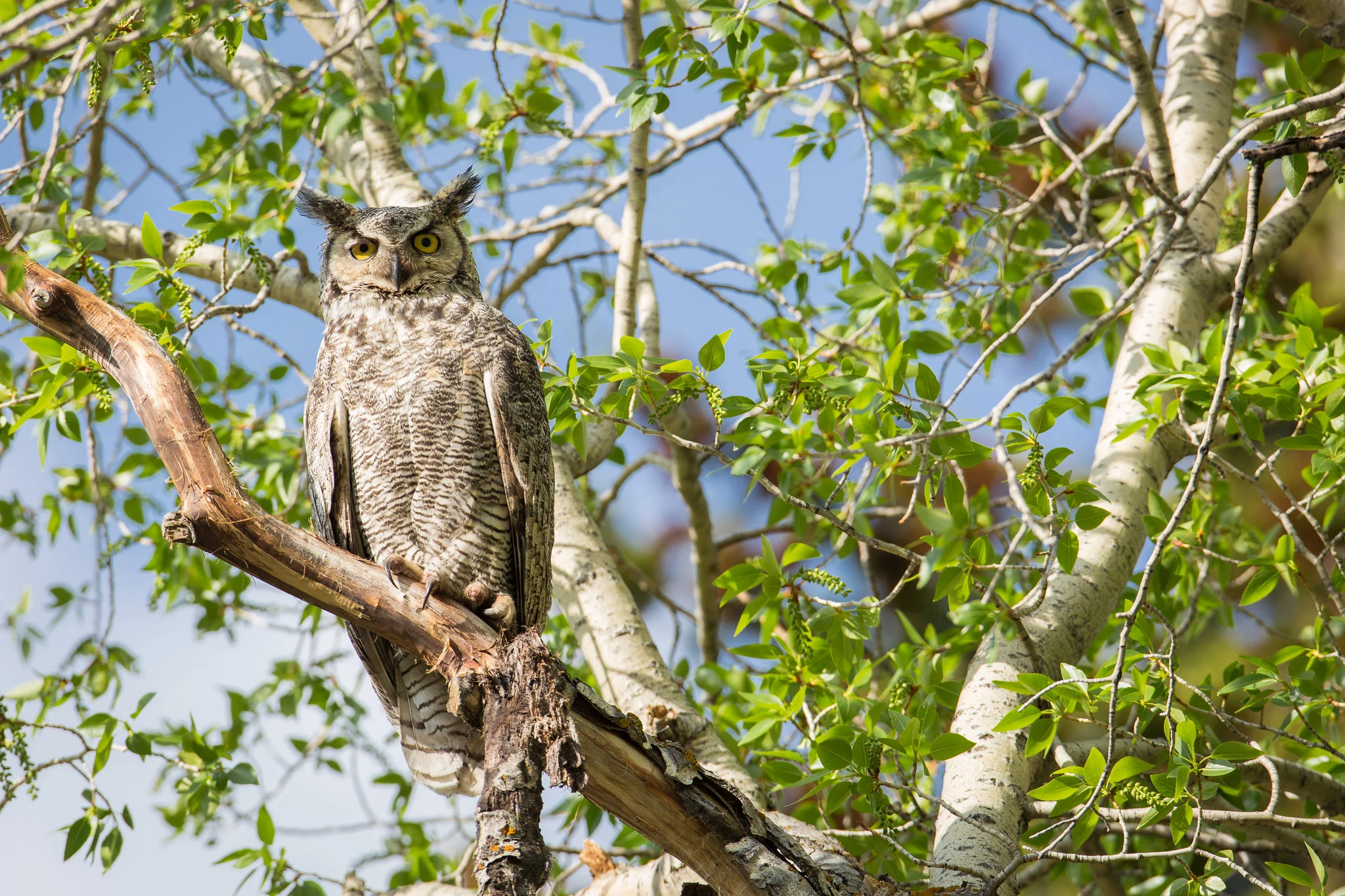With the rolling, forested southern hills and gradual transition to a mosaic of open lands containing prairie and agriculture in the north, Missouri would seem to be a tremendous spot to find owls. However, is the habitat too good to be true – are there owls in Missouri?
Yes, there are—indeed–a variety of different types of owls in Missouri that can be observed. In fact, the state is home to eight wonderful owls. Yes, some will try to claim that a ninth owl—the Burrowing Owl—should be included on a list of owls in Missouri. However, the reality is that Burrowing Owls are rare in the state, only being observed every few years.
Now that I’ve set the stage, I’m sure you’re eager to learn more about Missouri owls. Well, let’s not wait any longer; please enjoy this photo and information guide to the owls of Missouri!
Table of Contents
8 Types Of Owls In Missouri
Barn Owl
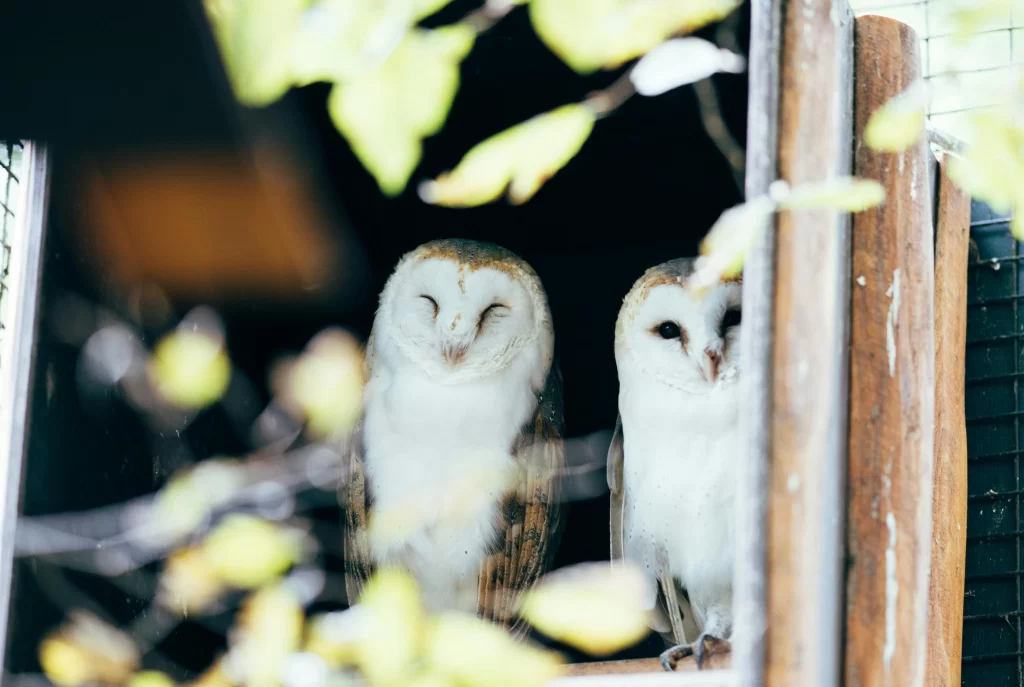
Scientific Name: Tyto alba
Length: ~12.5 – 16 inches ( 32 – 40 cm)
Weight: 14 – 24.7 ounces
Wingspan: ~39.5 – 49 inches (100 – 125 cm)
Barn Owls are year-round Missouri residents. Still, seeing Barn Owls in Missouri is a treat, as these birds of prey are scarce and inherently difficult to find because of their nocturnal lifestyles.
Oftentimes the best way to detect this owl in Missouri is by listening for their vocalizations – raspy shrieks that are unlike the calls of most other owls. Although there are plenty of misleading bird names, that is not the case for these creatures, as barns are one of the best places to find these raptors.
Although some of the best Barn Owl habitat is located in northern Missouri, there have not been many eBird records from this area. Several reasons may explain this. First, northern Missouri is towards the northern edge of the breeding range for Barn Owls in the Midwest. Additionally, few birders regularly cover northern Missouri, so there may be more Missouri Barn Owls around here than what eBird would suggest.
For now, the best place to find these owls in Missouri would be in southeastern Missouri.
Barred Owl
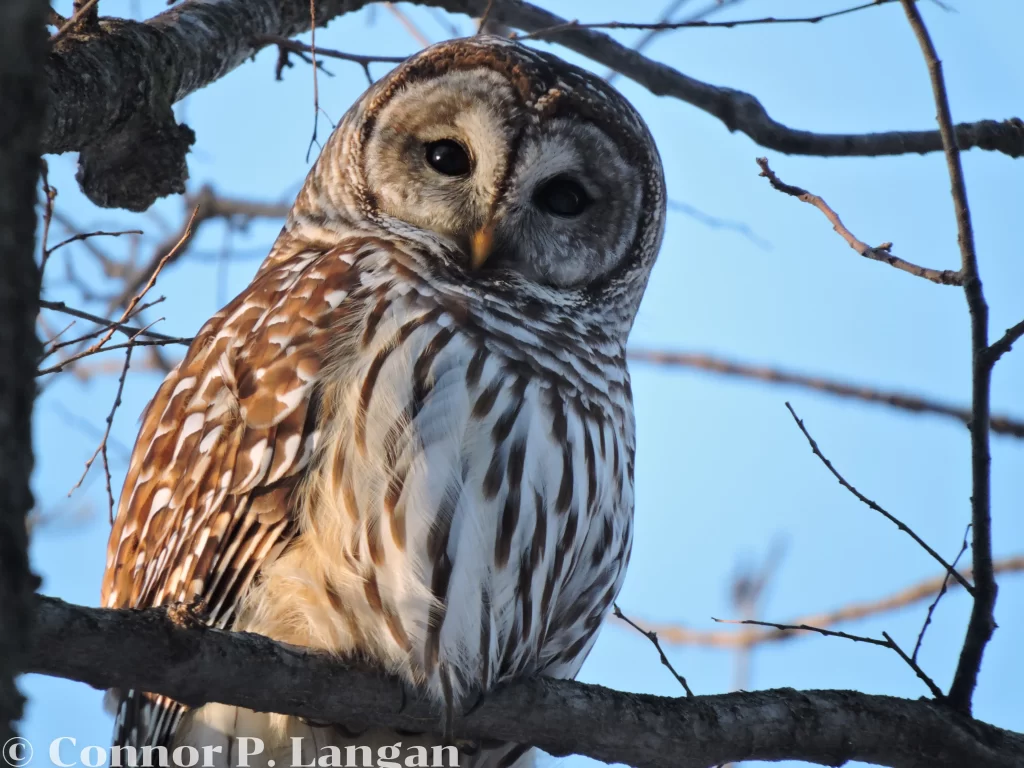
Scientific Name: Strix varia
Length: 19 inches (53 cm)
Weight: 16.5 to 37 ounces
Wingspan: 39 – 43 inches (99 – 110 cm)
Unlike Barns Owls, observing Barred Owls in Missouri is a very regular occurrence. Yes, Barred Owls are the most common owls in Missouri, with more than 30,000 observations submitted to eBird.
Barred Owls are year-round residents in the Show-Me State. Unsurprisingly, they thrive in the forests of southern Missouri, but they can be found throughout the state. In parts of Missouri with few trees, these large owls in Missouri can make themselves at home in woodlots and windbreaks.
Barred Owls are undoubtedly abundant in much of Missouri, but one of the reasons why there have been so many reports to eBird is because they are easy to identify by call. Yes, hearing “Who-cooks-for-you? Who-cooks-for-you-all?” from a woodland is an easy way to identify a Barred Owl.
Eastern Screech-Owl
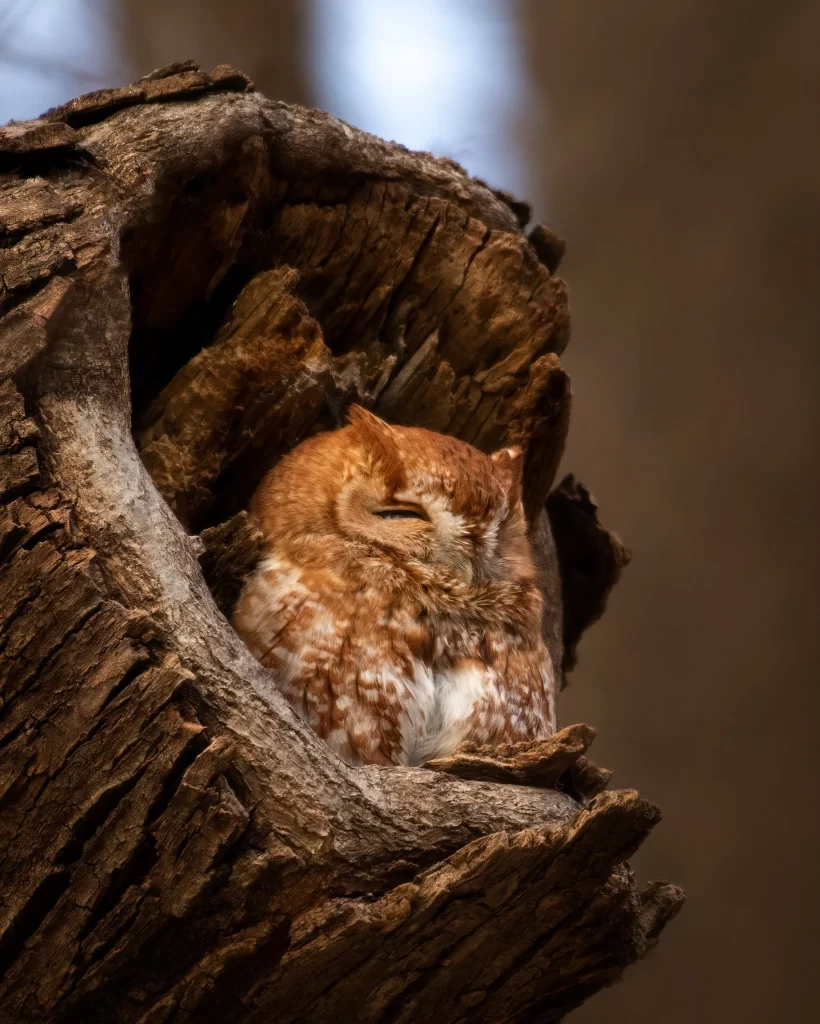
Scientific Name: Otus asio
Length: 8.5 inches (22 cm)
Weight: 4.3 – 8.6 ounces
Wingspan: 19 – 24 inches (48 – 61 cm)
Eastern Screech-Owls are small owls in Missouri, but they are not the tiniest owls in the state. Although they are petite, they are readily able to be detected thanks to their habit of making frequent whinny-like noises. Moreover, they are formidable hunters, eating creatures like rodents and bats.
Eastern Screech-Owls are year-round residents in Missouri that have been found throughout the entirety of the state. They are most numerous in the extensive forests of southern Missouri.
More than 2,400 records of this owl in Missouri have been submitted to eBird. Eastern Screech-Owls are adaptable birds of prey, as they do just as well in small woodlots as in large-scale forests.
Great Horned Owl
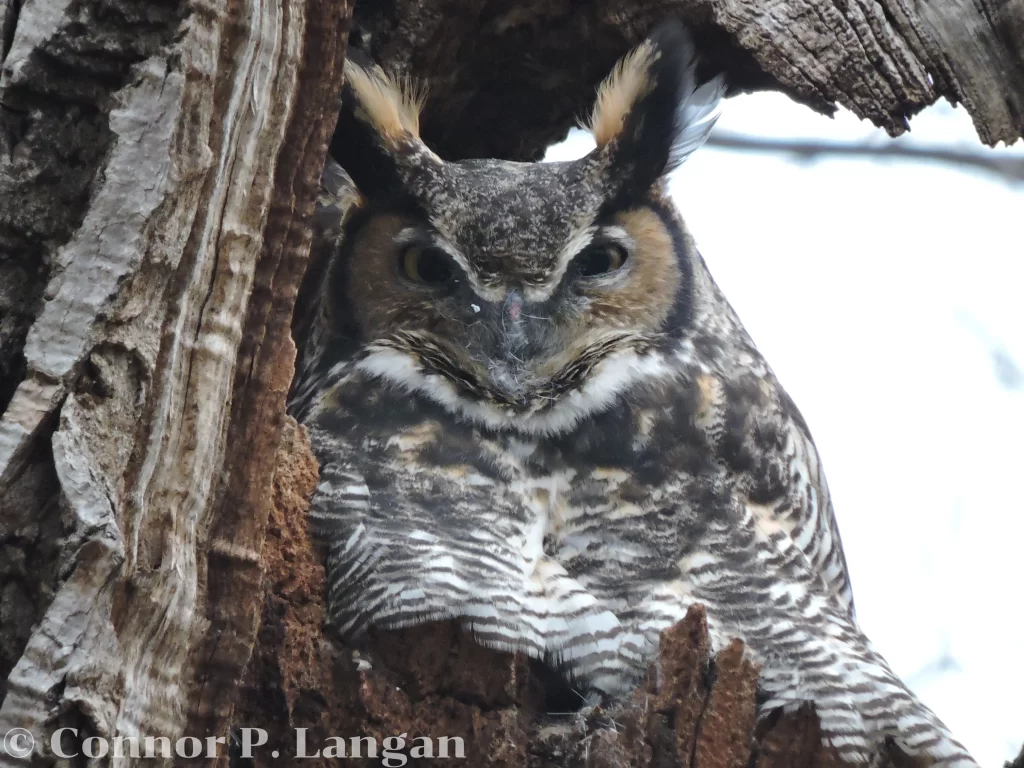
Scientific Name: Bubo virginianus
Length: 22 inches (56 cm)
Weight: 33 – 88 ounces
Wingspan: 40 – 57 inches (101 – 145 cm)
Great Horned Owls are the largest owls in Missouri, making them apex predators in this state. They are fierce hunters and will defend their nests from intruders, but they won’t bother people so long as they’re given plenty of space.
This large owl in Missouri gets an early start to its breeding season, with pairs establishing a territory in December or January and eggs being laid shortly thereafter. Those who venture to a sizable group of trees in a rural landscape will likely Great Horned Owls hooting at night.
There have been about 12,750 observations of Great Horned Owls in Missouri as per eBird data, making them the second most commonly observed Missouri owl. Look for these common owls in Missouri in windbreaks, cemeteries, parks, and greenbelts.
Long-eared Owl
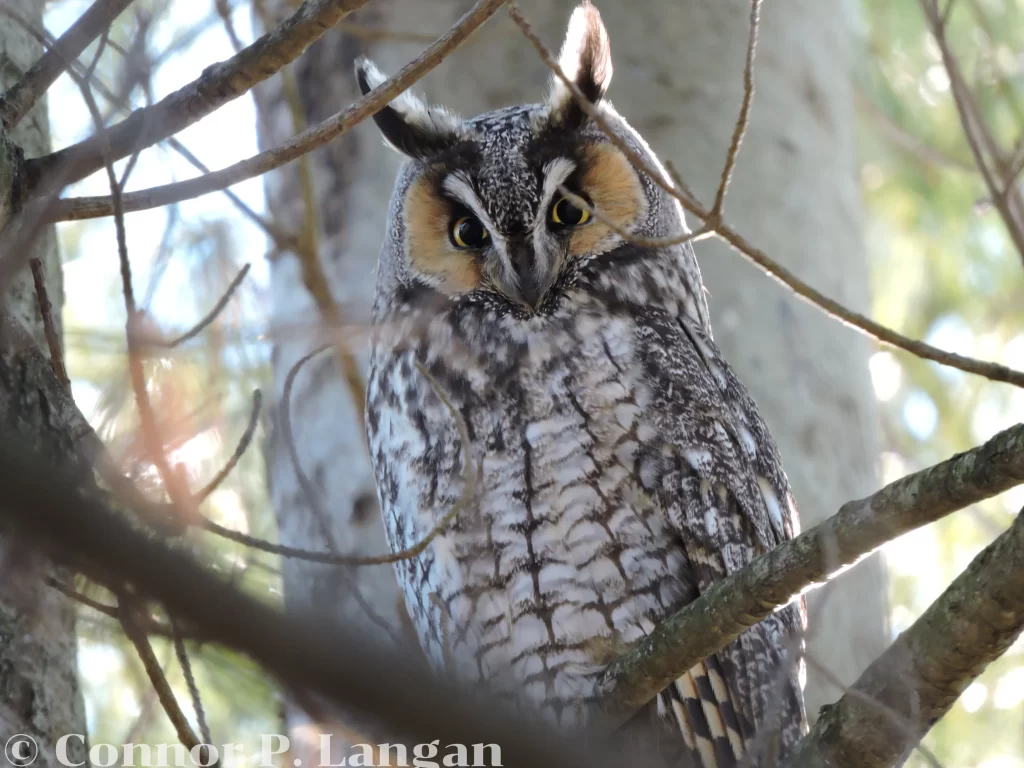
Scientific Name: Asio otus
Length: ~13.75 – 15.75 inches (35 – 40 cm)
Weight: 7.75 – 15.25 ounces
Wingspan: 35.5 – 39.5 inches (90 – 100 cm)
Long-eared Owls are uncommon winter visitors in Missouri, with only 227 eBird observations in the state at the time of writing this article. The best time to attempt to see a Long-eared Owl would be November through early April.
These elusive types of owls in Missouri breed in the Upper Midwest into Canada, but they migrate to more southerly locales in the winter. However, few venture into the deep south of the United States, making northern Missouri the best place to seek Long-eared Owls.
These owls in Missouri will consistently use the same roost throughout the winter provided that they aren’t bothered at this roost. Cedar trees, willow clumps, and pines all make for tremendous Long-eared Owl winter habitat.
Northern Saw-whet Owl
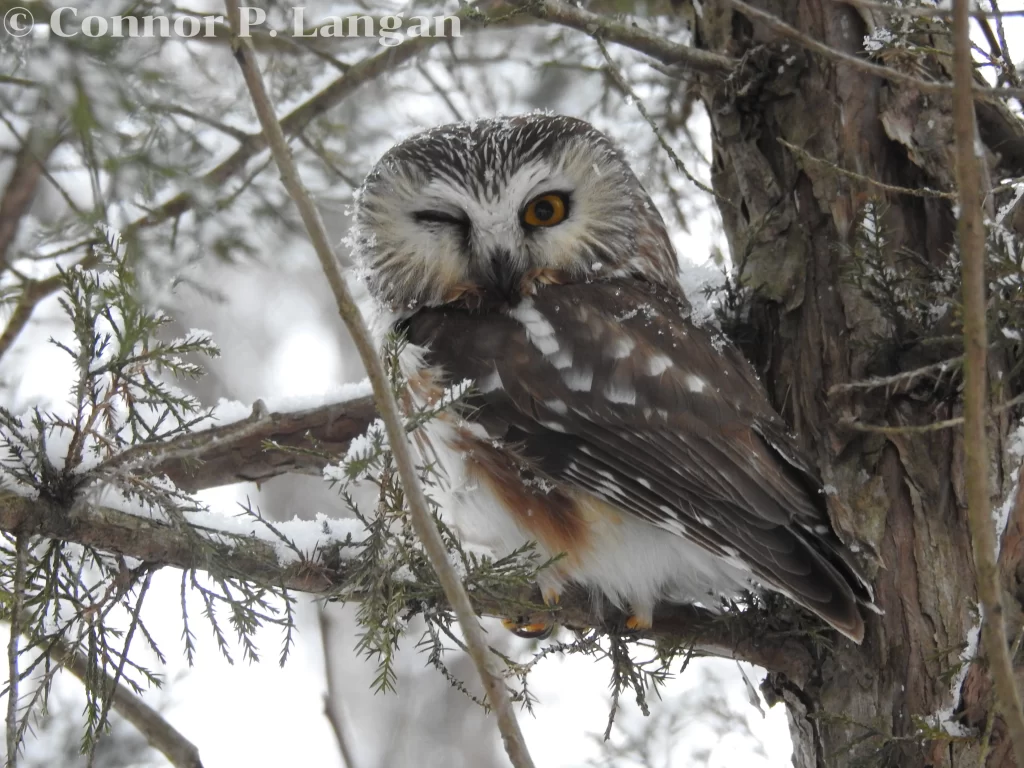
Scientific Name: Aegolius acadicus
Length: 7 – 8 inches (18 – 21 cm)
Weight: 2.5 – 5.5 ounces
Wingspan: 16.5 – 19 inches (42 – 48 cm)
Northern Saw-whet Owls are elusive winter residents who are the smallest owls in Missouri. Yes, although these petite owls likely winter in Missouri in fair numbers, they have the fewest observations within the state of any other owl on this list.
With just slightly more than 100 eBird records of these types of owls in Missouri, many would assume that Northern Saw-whet Owls are very rare in the state. However, this small number of observations is not likely a good indicator of the status of these small owls in Missouri. Instead, the time of year in which they visit and their tiny size surely help to conceal substantial numbers of saw-whet owls that visit Missouri.
Like Long-eared Owls, Northern Saw-whet Owls will consistently use the same perch in a cedar tree or conifer throughout the winter. Looking for the whitewash that accumulates below their roost can give away their presence.
Short-eared Owl
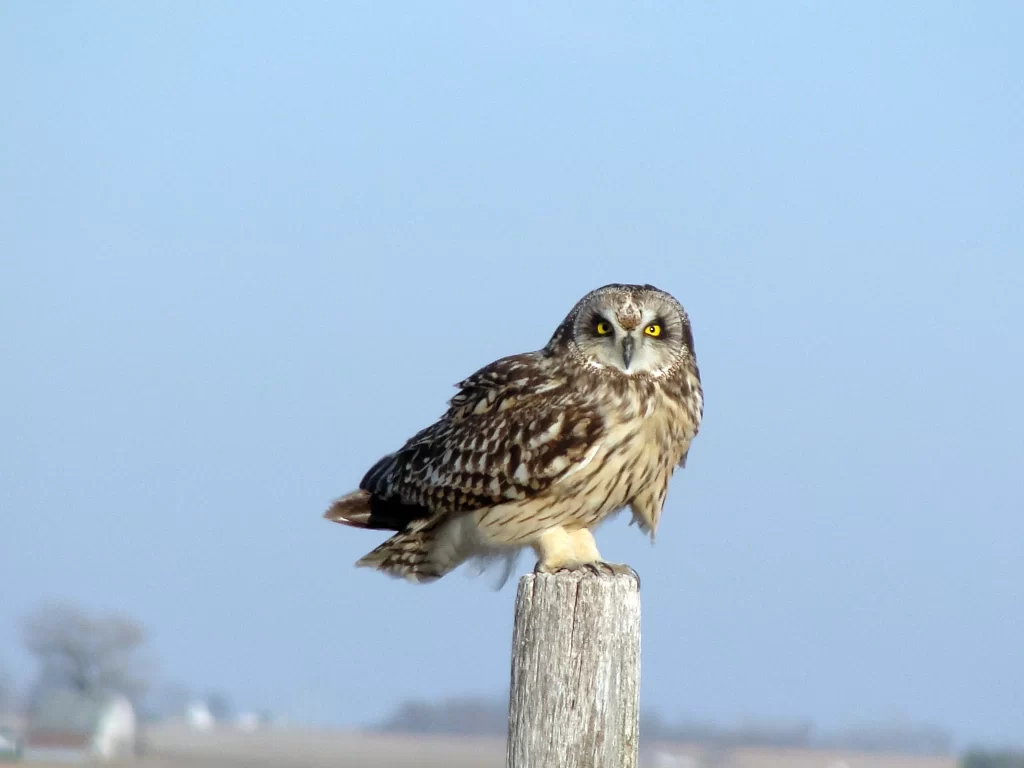
Scientific Name: Asio flammeus
Length: 15 inches (38 cm)
Weight: 7.3 – 17 ounces
Wingspan: 33.5 – 40.5 inches (85 – 103 cm)
Short-eared Owls are very common winter visitors to the state of Missouri, with more than 2,100 eBird records. Although they likely once bred in the state, Short-eared Owl breeding has not been confirmed for some time now.
Therefore, the best time to look for Short-eared Owls in Missouri is from November through February. The reason why there have been so many reports of these owls of Missouri compared to other wintering owls is because Short-eared Owls hunt in the open during dawn and dusk.
Traveling to a grassland or pasture in the early morning or late during winter may produce a Short-eared Owl. Look for their bounding flight as they search for prey in these habitats.
Snowy Owl
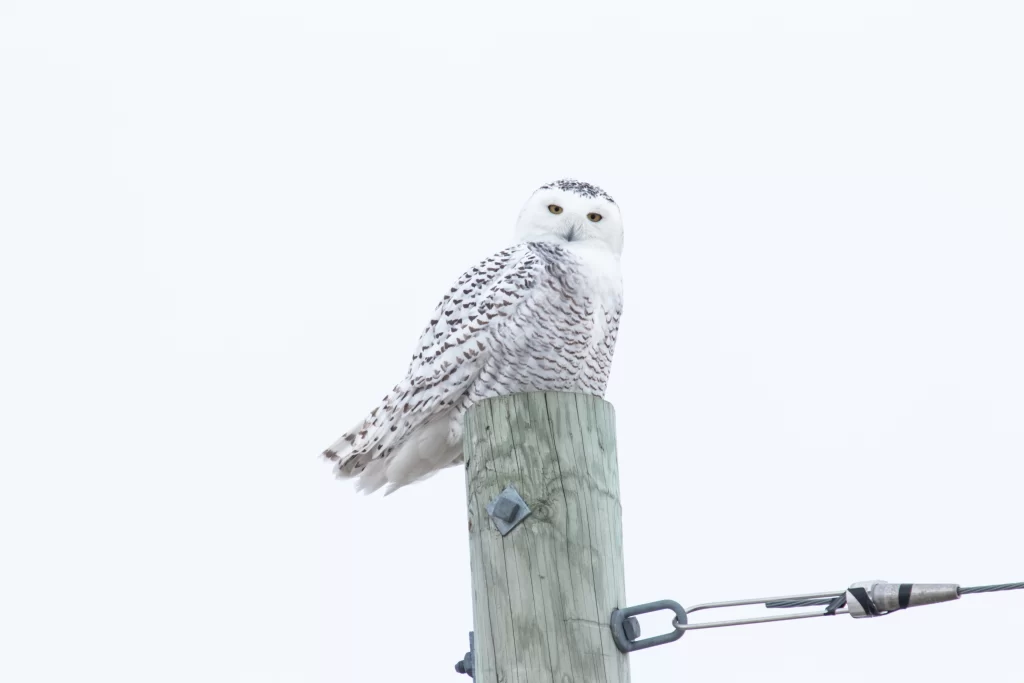
Scientific Name: Bubo scandiacus
Length: 53 – 66 cm
Weight: 25 – 88 ounces
Wingspan: 125 – 166 cm
Snowy Owls are often considered to be among the most sought-after Missouri owls despite having far more eBird records than either Northern Saw-whet or Long-eared Owls in the state. Even so, it’s hard to match the majesty of one of these incredible birds.
These owls in Missouri are not regular visitors to the state, but there may be a handful of different reported in irruption years in which this species travels south of their typical wintering range.
Snowy Owls may be found anywhere in Missouri, and locating one is often a matter of luck. They may be perched on rural utility poles, in agricultural fields, or in marshes. During winters in which lots of snow is present, it can be difficult to locate these white owls in Missouri.

